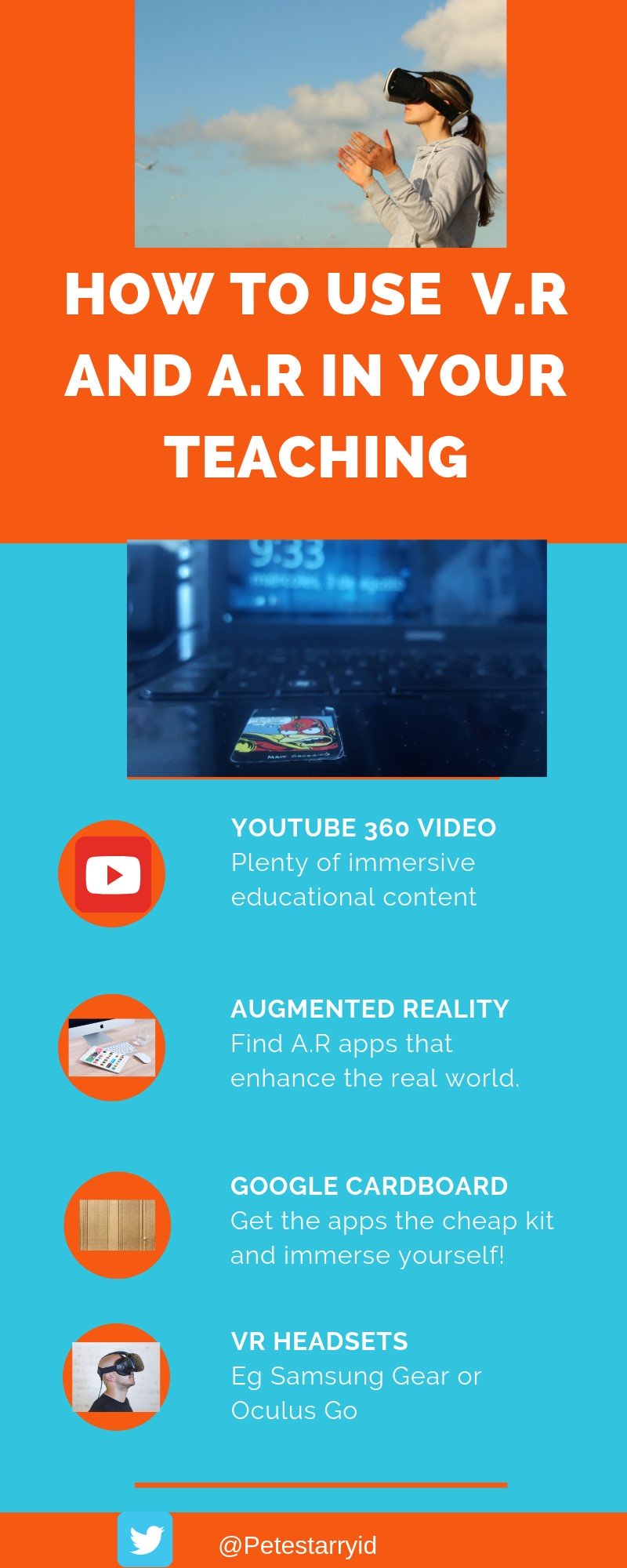4 ways to use virtual reality (V.R) in your teaching

Since the lockdown began, teachers and learners overnight adapted to a new way of learning – distant learning. This was made possible due to technology.
This blog will show you some simple and cheap ways to use technology such as virtual reality (or V.R) with your students.
Through V.R, users interact with three-dimensional (3D) computer-simulated images. There is often a tension between the desire to embrace new technology and the reality of shrinking budgets in education.
To address this, we will begin with some free ways of making your students’ learning more acquainted with virtual reality. We will then look at some very cheap tools and apps, before considering the category of kit that justifies a sizeable chunk of a departmental or CPD budget.
1. Do a 360
Entry-level virtual reality (or VR) can come in the form of using the search bar in Youtube to search for ‘360 videos’ or ‘360-degree educational’. Much of the content is suitable for the Primary sector. Examples of these include 360-degree views of sharks or the solar system.
Older children may have their history or English lessons enhanced by studying 360 videos of the Dunkirk landings or World War 1 trenches. The content works better, of course, if the teacher uses the videos as part of a small blended learning programme. Alternatively, teachers could upload the 360 videos to EDpuzzle and add their own questions.
2. A.R.E you ready for A.R?
Augmented reality (or A.R) is another form of virtual reality that doesn’t require expensive hardware, such as headsets. The appeal of A.R is it is augmenting of real settings with computer graphics. The uses of this are manifold, from creating faithful replicas of industrial constructions to virtual teachers with Mondly (!). Essentially, A.R brings those potentially dry topics and concepts to life.
At worst, A.R can involve and engage the students, at best, it can inspire them. There are a growing number of free A.R apps on Android and IOS that are likely to match your subject area.
3. Board stiff?
Google Cardboard is an inexpensive way for students to experience immersive, stereoscopic vision. As its name suggests, the device is a simple but effective gateway to virtual reality or V.R. For as little as £3, students can wear the headset to help them use one of many Google Cardboard apps.
This will allow your classes to immerse themselves in virtual field trips, explore something as big as the Large Hadron Collider or as microscopic as the inside of a cell. Teachers will never watch videos like these again without first considering potential learning objectives, follow up activities or success criteria.

4. Get helmeted up
For a little more money, you may want to explore VR headsets to improve the learning experience. Some of your students will already be using VR headsets to make their gaming experience more immersive. Basic VR headsets like the Samsung Gear can be acquired for as little as £20-30.
For around £200, The Oculus Go Standalone VR Headset enables wireless streaming of film and televisual content. More tech-savvy teachers may want to justify the spend by empowering their students to collaborate through Oculus Go.
They could watch MEL Chemistry Labs or take a tour of Anne Frank’s house via the apps. They could also get social through Altspace, a social VR meeting space. One word of warning, though, your students may discover videos that take them to places that you don’t want them to go. An example of this a video uploaded by ‘Disrupt’, entitled, ‘I spent a week in a VR headset and here’s what happened.’
Two additional tips, though. Firstly, ask or poll the students about their engagement with VR/AR. They may uncover something that helps others learn. Secondly, remember to focus on learning first and technology second.
We hope that this blog was suitably immersive!








Responses